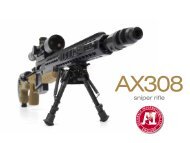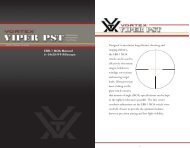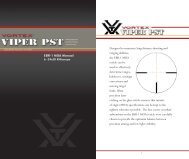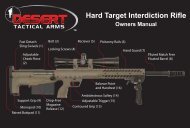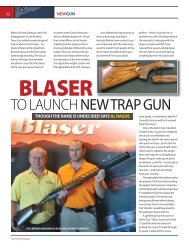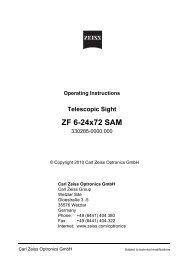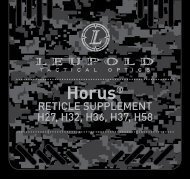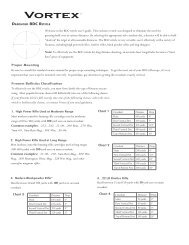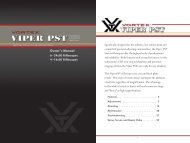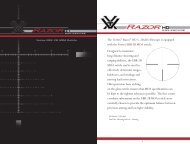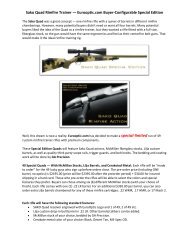Mark 23 Pistol .45 ACP - Heckler & Koch USA
Mark 23 Pistol .45 ACP - Heckler & Koch USA
Mark 23 Pistol .45 ACP - Heckler & Koch USA
- No tags were found...
Create successful ePaper yourself
Turn your PDF publications into a flip-book with our unique Google optimized e-Paper software.
CAUTION: A pair of Universal Mounting Grooves located on the front of the<strong>Mark</strong> <strong>23</strong> frame allow for a variety of accessories to be used with the pistol.Improperly designed or installed accessories may result in damage to the<strong>Mark</strong> <strong>23</strong> mounting grooves and/or the <strong>Mark</strong> <strong>23</strong>. Such damage is not coveredunder warranty. Be certain to use only HKI authorized accessories andfollow installation and precautions carefully.NOTE: Accessories designed for the Universal Self-loading <strong>Pistol</strong> (USP) willnot work on the Universal Mounting Groves of the <strong>Mark</strong> <strong>23</strong>.Operation and CharacteristicsA. Double/Single Action - For double-action (DA), pulling the trigger will cockthe hammer and immediately release it, discharging a chambered round. To firethe first chambered round in single-action (SA), the hammer must be manuallycocked before pulling the trigger. All shots after the first one will be fired singleactionbecause the slide automatically recocks the hammer after each shot.B. Magazine - The magazine is produced from sheet steel and has a totalcapacity of 12 rounds. The rounds are positioned within the magazine in astaggered arrangement. Rounds are visible through the viewing holes locatedalong the back side of the magazine housing. The viewing holes are marked withnumerals denoting the number of rounds remaining within. The floorplate can beeasily removed for disassembly and cleaning of the magazine components.C. Loaded Chamber Indicator - The <strong>Mark</strong> <strong>23</strong> pistol does not have a loadedchamber indicator. The extractor does not act as a loaded chamber indicator.D. Decocking Lever - The decocking lever allows the operator to quietly lowerthe cocked hammer without concern of an accidental discharge. When thehammer is cocked, it may be lowered safely by moving the decocking lever fullyinto the decocking (down) position. The decocking lever cannot be depressed(and therefore does not allow the hammer to be lowered) if the safety lever isengaged. The decocking lever always springs back into its disengaged (up)position due to the spring pressure exerted by the decocking spring.E. Safety Lever - The safety lever is an ambidextrous “thumb” lever located onthe rear of the frame. It is actuated by the firing thumb of the operator. The safetylever blocks the release of the cocked hammer when it is in the engaged (up)“safe” position (see Figure 4a). The safety lever is depressed downward intothe “fire” position (see Figure 4b). The safety lever is not spring actuated andtherefore must be moved manually from one position to the other by the operator.Figure4a “Safe”PositionFigure 4b “Fire”Position: Thesafety lever cannotbe placed in the“safe” (up) positionif the hammer isuncocked (down).10



